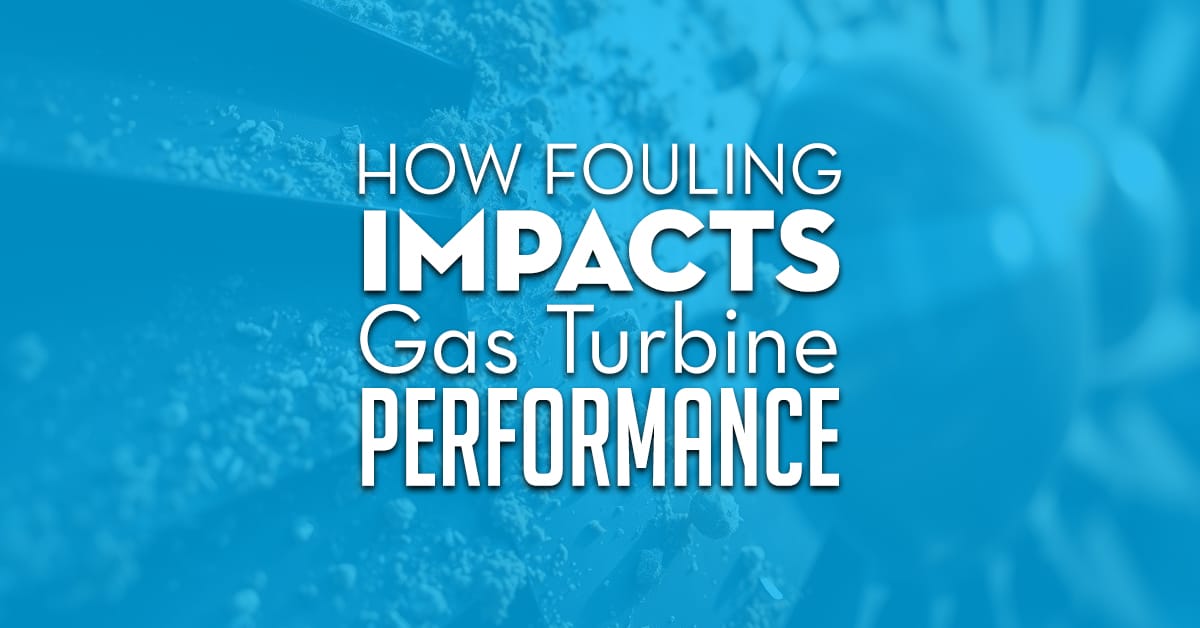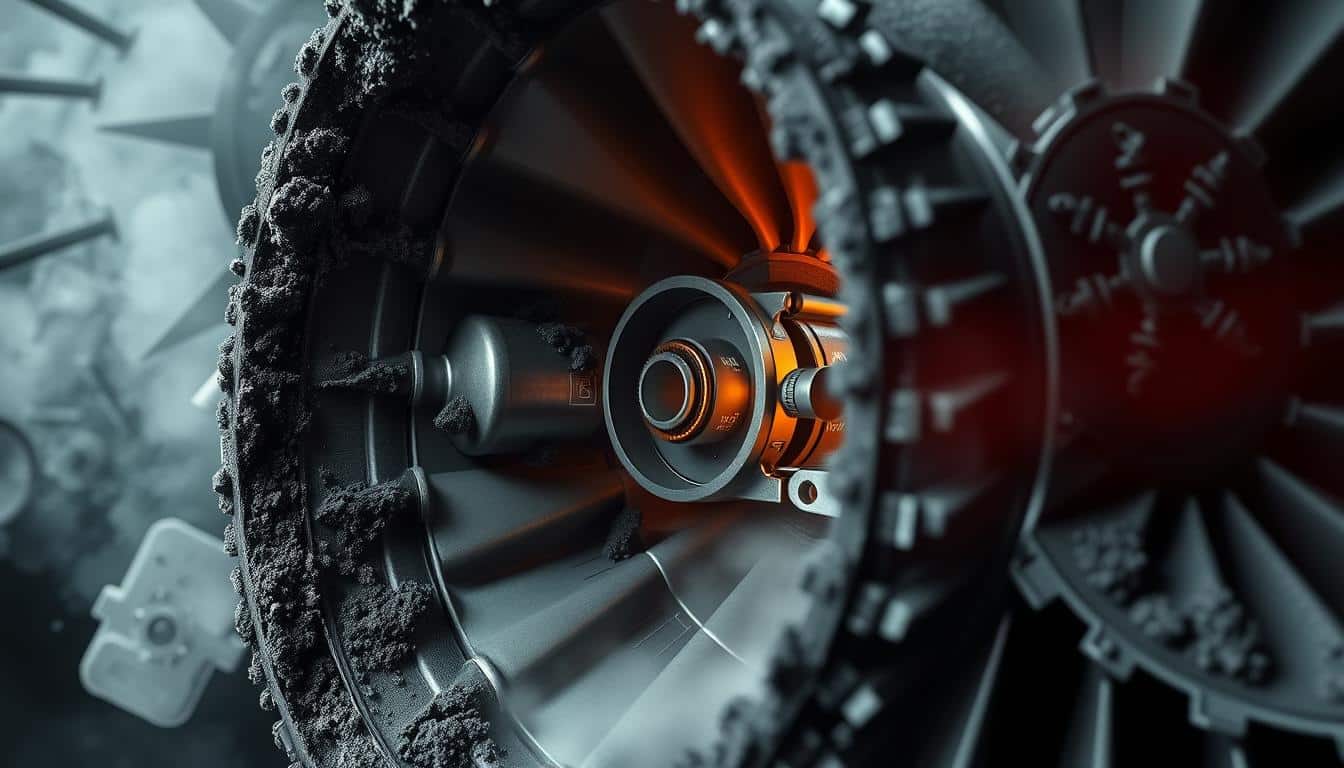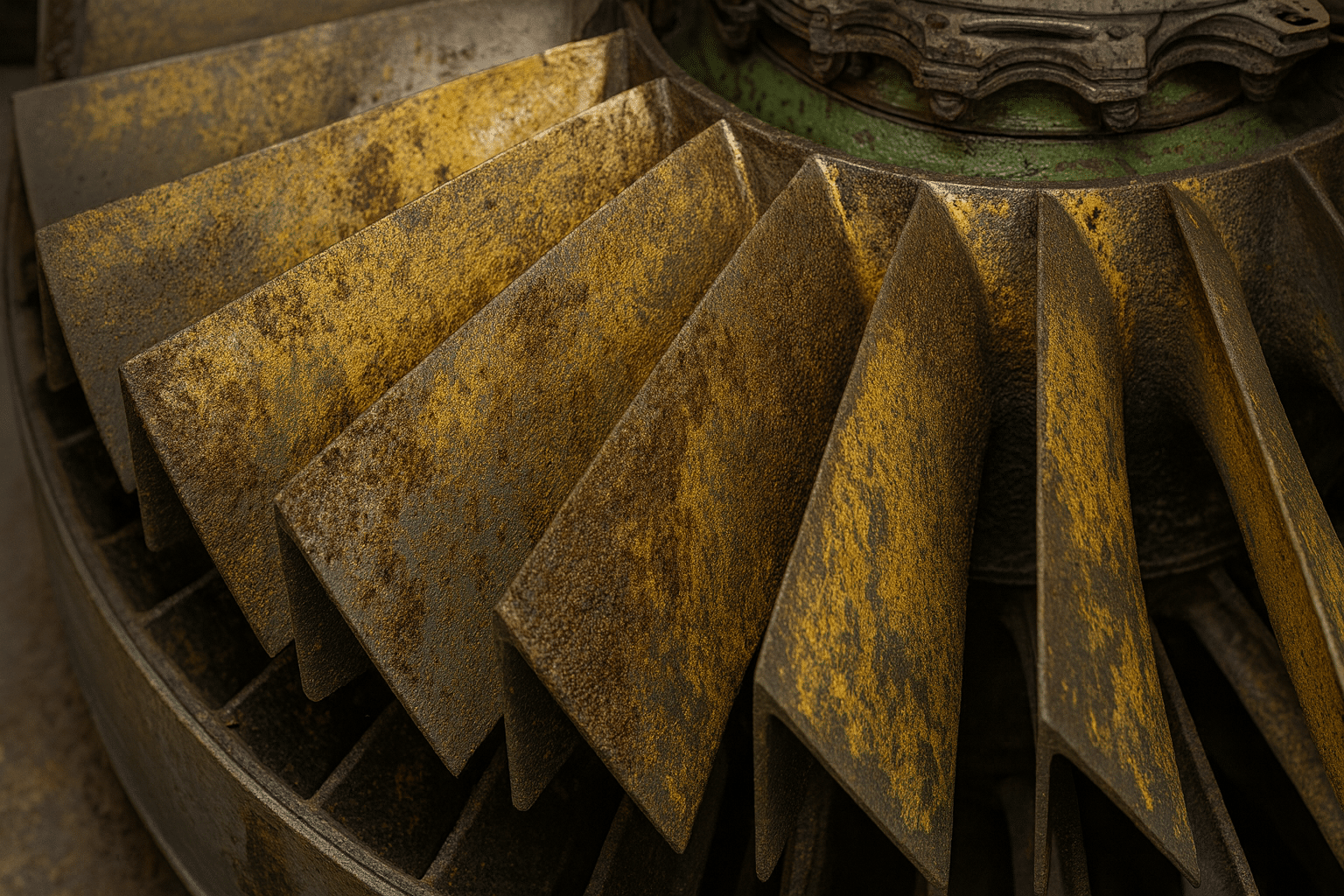
Industrial power generation is confronted with a critical challenge that severely impacts profitability. Airborne particles cause significant efficiency losses in power plants globally. This degradation process results in millions of dollars in annual losses due to increased fuel consumption and reduced power output.
Accumulation of particulate matter on critical components leads to measurable performance penalties. Operating under dusty conditions causes severe surface contamination, reducing thermal efficiency. Combined cycle power plants suffer from capacity losses, leading to higher operational costs and decreased competitiveness in energy markets.
Allied Power Group, based in Houston, Texas, excels in addressing industrial equipment contamination issues. Our team of experts understands the complex relationship between environmental conditions and operational efficiency. We recognize how ambient air quality affects compressor performance and overall system reliability.
Key Takeaways
- Airborne contamination significantly increases fuel consumption and reduces power generation efficiency
- Dusty operating conditions cause measurable capacity losses in industrial power equipment
- Surface deposits on critical components directly impact thermal performance and operational costs
- Environmental air quality plays a critical role in maintaining optimal equipment performance
- Professional maintenance solutions are essential for preventing efficiency degradation
- Combined cycle facilities face particular challenges from particulate matter ingestion
Understanding Fouling Mechanisms in Industrial Gas Turbines
Fouling mechanisms in industrial gas turbines involve complex particle deposition processes affecting various system components. Allied Power Group’s extensive experience in industrial gas turbine repair offers insights into how contaminants interact with turbine surfaces. These interactions follow predictable scientific principles, determining where and how contamination accumulates.
The thermodynamic principles governing gas turbine operation are significantly compromised by particulate matter. Severe surface fouling occurs when particles settle and accumulate on critical components. The efficiency of the Brayton cycle heavily depends on maintaining clean air flow through the compressor stages.
Filtration performance in inlet air systems serves as the first line of defense against contamination. Yet, even advanced filtration cannot eliminate all particles from entering the turbine. Understanding these fundamental processes aids in predicting fouling patterns and developing effective prevention strategies.
Compressor Fouling and Particle Deposition Processes
Compressor fouling starts when airborne particles interact with rotating compressor blade surfaces through complex physics. The kinetic energy of particles determines their ability to adhere to blade surfaces upon impact. Higher velocity particles often bounce off surfaces, while slower particles with sufficient adhesion properties stick to the substrate.
Sticking probability depends on multiple factors including particle size, composition, and surface conditions. Smaller particles typically exhibit higher deposition rates because they follow air streamlines more closely. These particles can navigate around larger obstacles and reach critical areas of the axial compressor.
The adhesion process involves both mechanical and chemical interactions between particles and airfoils. Surface roughness, temperature, and moisture content all influence how effectively particles bond to compressor blade surfaces. Once initial particles adhere, they create nucleation sites for additional contamination.
Particle ingestion rates vary significantly based on operating environment and seasonal conditions. Industrial facilities near coastal areas experience salt particle deposition. Manufacturing regions often deal with metallic dust and chemical contaminants that create unique fouling patterns.
| Particle Type | Size Range (microns) | Sticking Probability | Primary Deposition Location | Impact on Performance |
|---|---|---|---|---|
| Salt Crystals | 0.1 – 10 | High | First Stage Blades | Severe efficiency loss |
| Industrial Dust | 1 – 50 | Medium | Multiple Stages | Gradual degradation |
| Organic Matter | 5 – 100 | Very High | Inlet Components | Rapid fouling |
| Metallic Particles | 0.5 – 25 | Low | Later Stages | Erosion damage |
Heat Exchanger and Combustor Fouling Patterns
Heat exchanger fouling mechanisms differ from compressor contamination. Components experience elevated temperatures that alter particle behavior and adhesion characteristics. Thermal cycling creates expansion and contraction that can either promote or inhibit fouling depending on operating conditions.
Volcanic ash particles present unique challenges due to their composition and melting characteristics. These contaminants can form glass-like deposits when exposed to high combustor temperatures. The resulting fouling creates insulating layers that dramatically reduce heat transfer efficiency.
Fly ash from industrial processes exhibits composition dependent behavior that varies by source material. Coal-derived fly ash contains different mineral components than biomass ash. Each type creates distinct fouling patterns that require specific cleaning approaches.
Combustor fouling typically involves both particle deposition and chemical reactions with fuel combustion products. High-temperature environments accelerate chemical bonding between contaminants and metal surfaces. These deposits often prove more difficult to remove than simple particle accumulation.
Droplet formation from condensed vapors adds another layer of complexity to fouling mechanisms. Water droplets can carry dissolved contaminants deep into the turbine system. When these droplets evaporate, they leave concentrated deposits in hard-to-reach locations.
The velocity profiles within different turbine sections influence where specific types of contamination accumulate. Low-velocity areas promote settling of larger particles. High-velocity regions experience erosion that can remove loose deposits while allowing strongly bonded fouling to persist.
How Gas Turbine Heat Rate Fouling Reduces Efficiency
Fouling in gas turbines leads to efficiency drops through complex mechanisms affecting both thermal and aerodynamic performance. These processes result in significant losses, increasing operational costs and reducing equipment lifespan. Allied Power Group’s repair expertise highlights how fouling efficiency losses significantly raise operational costs and shorten equipment lifespan for industrial gas turbine operators.
Thermodynamic analysis of gas turbines reveals that increased pressure ratios enhance efficiency at constant firing temperatures. Over 50% of turbine work powers the axial flow compressor. The Brayton cycle efficiency is directly affected by changes in heat transfer and pressure losses throughout the system.
Learn More: Performance Upgrades: Power Augmentation & More
Direct Impact on Heat Transfer and Thermal Performance
Accumulation of deposits on heat exchanger surfaces acts as insulating barriers, significantly reducing heat transfer coefficients. These deposits form on turbine blade surfaces, nozzle guides, and vane assemblies. The insulating effect disrupts the thermal balance essential for optimal performance.
Fouling compromises sophisticated cooling systems designed for high-temperature operation. Cooling passages become restricted as particulate matter accumulates within internal channels. This restriction reduces cooling air effectiveness and increases metal temperatures beyond design limits.
Hot gas path components experience reduced thermal performance due to surface roughness changes. The coefficient of heat transfer drops as fouling layers build up on critical surfaces. This reduction forces the combustor to operate at higher firing temperatures to maintain power output, further accelerating component degradation.
Compressor Performance Degradation Effects
Particulate buildup on compressor blades alters their aerodynamic profiles significantly. These changes increase pressure drop across compressor stages while reducing mass flow capacity. The modified blade geometry disrupts airflow patterns that engineers carefully designed for optimal compression.
Isentropic efficiency decreases as fouling accumulates on compressor components. Surface roughness increases drag forces and creates turbulent flow conditions. These conditions reduce the compressor’s ability to achieve design pressure ratio levels efficiently.
Viscosity effects become more pronounced as contaminated air moves through fouled compressor stages. The combination of altered aerodynamics and increased surface friction creates compounding efficiency losses. Each stage experiences reduced performance that accumulates throughout the compression process.
Quantifying Heat Rate Increases from Fouling
Measuring fouling-related efficiency losses requires systematic monitoring of key performance indicators. Pressure ratio changes provide direct evidence of compressor fouling severity. Temperature measurements across heat exchangers reveal thermal performance degradation patterns.
Erosion and corrosion effects compound fouling impacts over time. These mechanisms reduce engine creep life while increasing maintenance requirements. The cumulative impact creates measurable increases in heat rate that correlate directly with fouling severity levels.
| Fouling Severity Level | Heat Rate Increase (%) | Pressure Ratio Reduction (%) | Mass Flow Decrease (%) | Maintenance Frequency |
|---|---|---|---|---|
| Light Fouling | 2-4% | 1-2% | 1-3% | Annual |
| Moderate Fouling | 4-8% | 3-5% | 3-6% | Semi-Annual |
| Heavy Fouling | 8-15% | 6-10% | 6-12% | Quarterly |
| Severe Fouling | 15-25% | 10-15% | 12-20% | Monthly |
Cost-benefit analyses of fouling prevention strategies require accurate quantification methods. These methodologies incorporate multiple variables including component-specific degradation rates and operational parameter changes. The direct correlation between fouling severity and measurable efficiency losses provides the technical foundation for maintenance planning decisions.
Learn More: Allied Power Group’s Heat Rate Improvements
Allied Power Group’s Approach to Fouling Prevention and Remediation
Effective fouling prevention necessitates a systematic approach, integrating advanced filtration technologies with professional cleaning and restoration services. Allied Power Group, based in Houston, Texas, leverages decades of industrial gas turbine repair expertise. They provide tailored solutions to each client’s specific operational requirements. Their nationwide service capabilities ensure consistent support across various industries and environmental challenges.
This strategy combines computational fluid dynamics modeling with experimental investigation to optimize system performance. Engineers use sensitivity analysis and numerical methods to quantify the impact of different fouling scenarios on gas turbine efficiency. The approach integrates data from the ASME Digital Collection and ISO standards to establish best practices for fouling management.
Advanced Filtration and Inlet Air System Optimization
The foundation of effective fouling prevention lies in optimizing the inlet air system through advanced air filtration technologies. Allied Power Group’s engineers conduct detailed flow field analysis using CFD modeling. This minimizes pressure drop while maximizing contaminant removal efficiency. The process involves evaluating how particles inject into the system and deposit on solid surface areas.
The EMW® filtration upgrade demonstrates the effectiveness of this approach. The system successfully improved filtration efficiency from 35% to over 99% by upgrading filter class from F7 to (H)EPA E12. Enhanced prefiltration using Class F8 fine filters and Poret® coalescer media provides additional protection against smaller particles.
The upgraded filtration system delivers exceptional performance with (H)EPA E12 final filters, which offer a two-year service life. Prefilters maintain effectiveness for one year, while washable coalescers require service intervals of 4-6 months. This configuration virtually eliminates gas turbine fouling and ensures consistent clean air delivery to the turbine inlet.
| Filter Component | Filter Class | Efficiency Rate | Service Life |
|---|---|---|---|
| Final Filter | (H)EPA E12 | Over 99% | 2 Years |
| Prefilter | Class F8 | 85-95% | 1 Year |
| Coalescer | Poret® Media | Moisture Removal | 4-6 Months |
Professional Cleaning and Restoration Services
When fouling has already occurred, Allied Power Group provides specialized cleaning and restoration services. They remove existing deposits from contaminated components. The company’s systematic approach addresses different types of contamination based on surface materials and deposit characteristics. Professional technicians utilize proven techniques that restore equipment performance without damaging sensitive components.
The cleaning process incorporates inlet air cooling considerations to maintain optimal operating conditions during maintenance procedures. Engineers evaluate each situation to determine the most effective restoration method while minimizing downtime. This approach has proven successful, eliminating the need for online and offline washing procedures.
Allied Power Group’s Houston-based operations coordinate nationwide service delivery to ensure consistent quality and rapid response times. The company’s expertise in industrial gas turbine repair translates into measurable performance improvements and extended equipment life for clients across multiple industries.
Conclusion
Effective fouling management is a vital investment in optimizing industrial gas turbine performance. Advanced filtration systems have shown to virtually eliminate fouling. Some installations have operated without washing for over a decade after system upgrades.
The economic benefits of proactive preventive maintenance are substantial. Organizations that adopt thorough fouling prevention strategies see significant cost reductions. These reductions come from improved heat rate efficiency and longer component life. Such improvements lead to enhanced gas turbine engine performance and lower fuel consumption.
Allied Power Group is dedicated to excellence in industrial gas turbine repair and maintenance. The company ensures clients achieve optimal performance while minimizing costs through effective fouling management. Their Houston-based expertise covers all fouling-related challenges, from inlet air system optimization to professional restoration services.
Smart facility managers understand the value of investing in fouling prevention and remediation. This investment yields measurable returns through enhanced efficiency, reduced downtime, and extended equipment life. The initial costs of advanced filtration systems and professional maintenance are soon offset by sustained performance optimization and reduced operational expenses throughout the gas turbine’s lifecycle.
FAQ
What is gas turbine heat rate fouling and how does it affect performance?
Gas turbine heat rate fouling is a primary mechanism of performance degradation. It occurs when particulate contamination accumulates on critical components. This accumulation reduces thermal efficiency and increases fuel consumption. The fouling impacts operational efficiency by creating barriers to heat transfer and altering aerodynamic profiles. It also compromises cooling systems, leading to measurable losses in power output and increased operational costs.
How do particles deposit on compressor blades and what factors influence this process?
Particle deposition on compressor blades involves complex interactions. Key factors include particle size distribution, velocity profiles, substrate characteristics, and operating conditions. Smaller particles with higher kinetic energy are more likely to adhere to blade surfaces. Larger particles may bounce off or cause erosion damage.
What types of contaminants cause the most significant fouling in gas turbine engines?
Common contaminants include volcanic ash particles, fly ash, industrial particulate matter, and airborne particles from dusty inlet air conditions. Volcanic ash is problematic due to its adhesive properties and ability to form glass-like deposits at high temperatures. Fly ash can create abrasive conditions leading to erosion of turbine blades and vanes.
How does fouling reduce heat transfer efficiency in gas turbines?
Fouling reduces heat transfer efficiency by creating insulating barriers on heat exchanger surfaces, turbine blades, nozzles, and vanes. These deposits lower heat transfer coefficients and compromise cooling passages effectiveness. The accumulated deposits act as thermal barriers, preventing efficient heat exchange. This forces the turbine to operate at higher temperatures to maintain power output.
What impact does compressor fouling have on aerodynamic performance?
Compressor fouling significantly alters aerodynamic profiles by changing the shape of compressor blades and airfoils. This results in increased pressure drop, reduced mass flow capacity, decreased isentropic efficiency, and altered pressure ratios. The buildup of particulate matter disrupts smooth airflow over blade surfaces, creating turbulence and reducing the compressor’s ability to efficiently compress inlet air.
How can heat rate increases from fouling be quantified and measured?
Heat rate increases can be quantified through systematic measurement of pressure ratio changes, isentropic efficiency degradation, mass flow reductions, and thermal performance monitoring. Computational fluid dynamics (CFD) modeling and experimental investigation provide detailed analysis of flow fields and deposition rates. ISO conditions are used as baseline measurements to track performance degradation over time and calculate the economic impact of efficiency losses.
What advanced filtration systems are most effective for preventing gas turbine fouling?
High-efficiency particulate air (HEPA) filtration systems achieving over 99% filtration efficiency are most effective for fouling prevention. Advanced inlet air system optimization includes multi-stage filtration, proper filter selection based on particle size distribution, and optimized flow field design to minimize pressure drop while maximizing contaminant removal. Computational fluid dynamics modeling helps optimize filtration system design for specific operating conditions.
How does Allied Power Group’s EMW® upgrade prevent fouling-related issues?
Allied Power Group’s EMW® upgrade has successfully eliminated the need for online/offline washing. It implements advanced filtration technology and inlet air cooling systems. This upgrade optimizes the inlet air system to prevent particulate ingestion, maintains clean air flow to the compressor, and incorporates specialized filtration stages that remove contaminants before they can deposit on critical components.
What professional cleaning techniques are used for fouled gas turbine components?
Professional cleaning techniques include specialized methods tailored to different types of contamination and surface materials. These involve systematic removal of deposits from heat recovery steam generators, combustors, and turbine sections using appropriate cleaning agents and procedures. The cleaning process addresses both soft deposits and hard, baked-on contaminants while preserving component integrity and surface coatings.
How does fouling affect combined cycle power plant efficiency?
In combined cycle power plants, fouling affects both the gas turbine and heat recovery steam generator (HRSG) components. Reduced gas turbine efficiency leads to lower exhaust temperatures and reduced steam generation capacity. Fouling in heat exchangers decreases heat transfer effectiveness, while compressor fouling reduces overall plant power output and increases fuel consumption across the entire combined cycle system.
What role does viscosity play in particle deposition and fouling processes?
Viscosity affects particle behavior in the gas stream and influences deposition rates on component surfaces. Higher viscosity conditions can increase particle residence time near surfaces, promoting adhesion and deposit formation. Temperature-dependent viscosity changes also affect particle trajectories and sticking probability, significantly in high-temperature sections where viscous forces become more significant in particle capture mechanisms.
How do cooling passages become affected by fouling and what are the consequences?
Cooling passages become blocked or restricted by particulate deposits, reducing cooling air effectiveness and compromising the sophisticated cooling systems essential for high-temperature operation. This leads to increased metal temperatures, reduced engine creep life, and the risk of component failure. Fouled cooling passages cannot maintain proper temperature control, forcing turbines to operate at reduced loads or requiring more frequent maintenance intervals.

